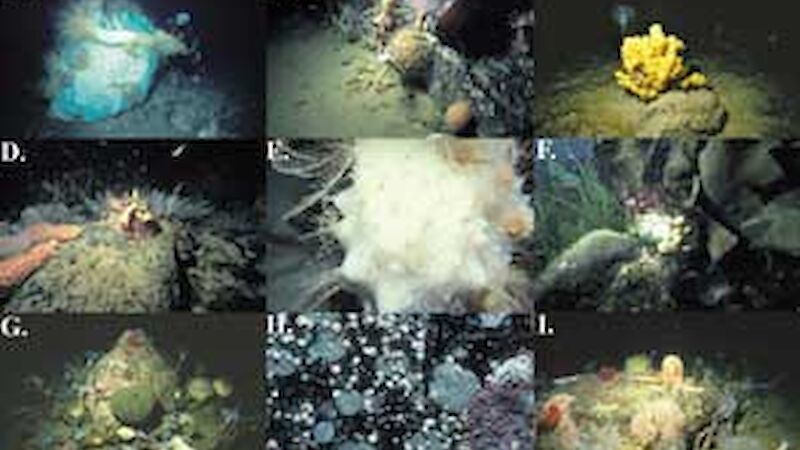Locked away under the Antarctic sea ice is a rarely seen underwater world teeming with life and colour. The diversity of form and hue in these seabed communities is in stark contrast to the sparse plant and animal communities found on land in Antarctica. Despite our perceptions that the Southern Ocean is a harsh environment, conditions in the sea around the coast of Antarctica are remarkably constant, so although it is cold, with an average temperature only a few tenths of a degree above the freezing point of seawater (-1.85°C), the environment is predictable and hence quite benign for those life forms that have evolved to live there.
At Casey these sea bed communities are being studied by the Human Impacts Program because they are the best indicator of environmental impacts from abandoned waste disposal sites. In contrast to the rich natural communities found at other locations, the seabed adjacent to the Old Casey tip in Thala Valley is littered with rubbish and supports very few species. These communities will be monitored during clean-up to ensure that the effort invested in removing the tips results in real environmental improvements and a return to natural conditions.
Martin Riddle,
Human Impacts Program Leader, AAD

